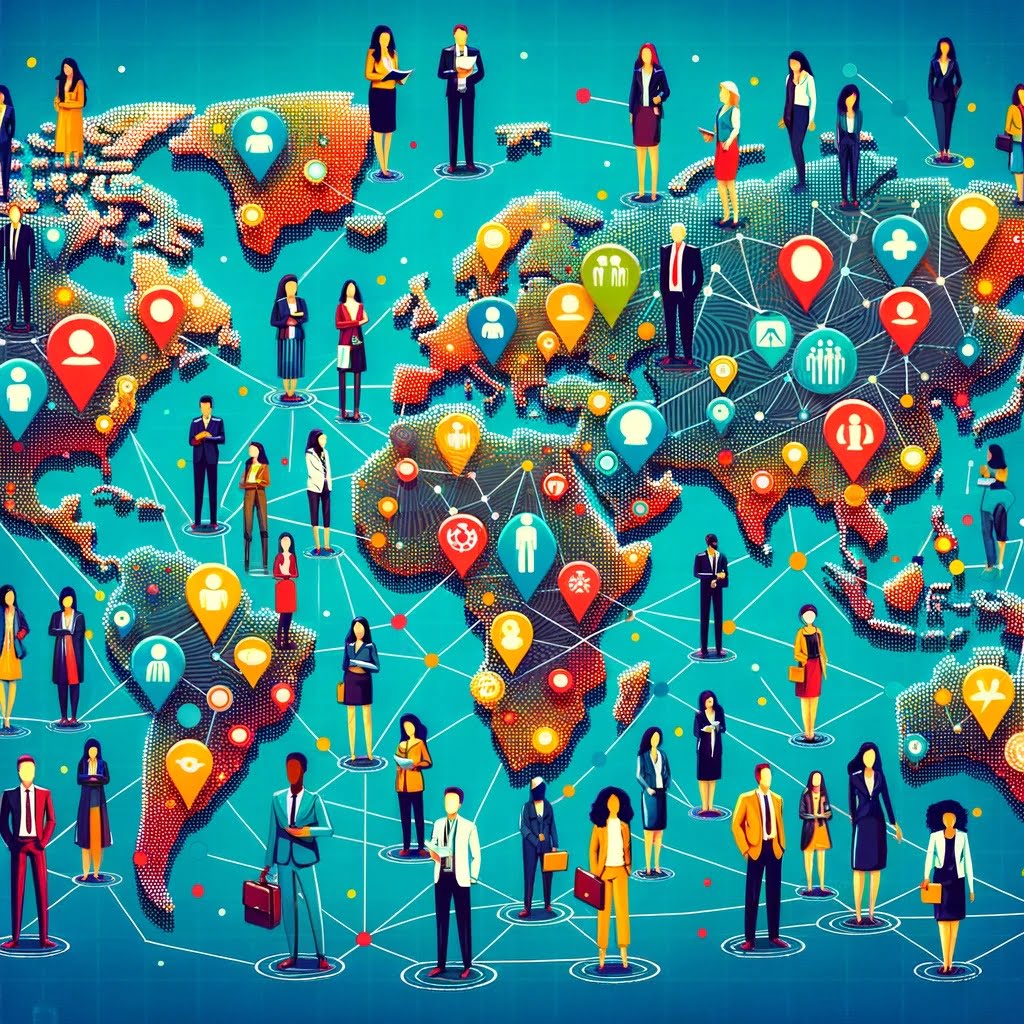Global Food Security and the Role of Technology in Solving the Crisis

As the global population surges towards 10 billion by 2050, the challenge of ensuring food security for all becomes increasingly urgent. Climate change, population growth, and resource scarcity are exerting unprecedented pressure on the global food supply. Yet, in the face of this mounting crisis, technology offers promising solutions that could transform agriculture, reduce food waste, and create more sustainable food systems.
In this blog, we will explore the key challenges facing global food security and how cutting-edge technologies like precision agriculture, artificial intelligence, biotechnology, and digital platforms are helping to address these challenges. From optimizing food production to creating new ways to distribute and consume food, technology is playing a pivotal role in safeguarding the future of food.
1. The Global Food Security Challenge
The world is currently grappling with a complex set of issues that threaten food security. Some of the key factors include:
- Population Growth: With more mouths to feed, food production will need to increase by an estimated 60-70% to meet future demands.
- Climate Change: Rising temperatures, extreme weather events, and shifting growing seasons are reducing agricultural productivity in many regions, particularly in the Global South.
- Water and Land Scarcity: Agricultural land is becoming scarcer due to urbanization and environmental degradation, while water resources are under increasing strain.
- Food Waste: Nearly one-third of the food produced globally is lost or wasted, creating inefficiencies in the food supply chain.
Addressing these challenges requires not only innovations in food production but also improvements in food distribution, supply chain management, and sustainability.
2. Technological Solutions to the Global Food Security Crisis
1. Precision Agriculture
Precision agriculture uses data analytics, sensors, and satellite imagery to provide farmers with real-time information about their crops. This technology enables farmers to apply water, fertilizers, and pesticides more efficiently, reducing waste and improving yields. For example, AI-driven systems can detect early signs of disease or nutrient deficiencies in crops, allowing for timely intervention. Precision agriculture also helps farmers monitor soil health and moisture levels, leading to more sustainable use of resources.
2. Biotechnology and Genetically Modified Organisms (GMOs)
Biotechnology is revolutionizing food production by developing crops that are more resilient to droughts, pests, and diseases. Genetically modified organisms (GMOs) are engineered to grow faster, use fewer resources, and provide higher nutritional value. These innovations are particularly crucial for regions facing harsh growing conditions, as they help ensure stable food supplies in areas where traditional crops struggle to thrive. In addition, biotech advancements like lab-grown meat and plant-based proteins are helping diversify food sources while reducing the environmental impact of animal farming.
3. Artificial Intelligence (AI) and Machine Learning
AI is transforming the food supply chain by optimizing every stage from farm to fork. AI-powered algorithms are being used to predict crop yields, analyze market demand, and enhance supply chain logistics, ensuring that food is delivered where and when it is needed most. Machine learning tools help monitor the entire lifecycle of crops, improving decision-making for farmers and reducing food waste. For instance, AI-driven platforms can identify inefficiencies in harvesting, packaging, and distribution, helping to eliminate food losses along the supply chain.
4. Vertical Farming and Urban Agriculture
With urbanization on the rise, there’s a growing need for innovative farming methods that require less land and water. Vertical farming is one such solution, using stacked layers of crops grown in controlled environments, often within urban areas. These farms rely on advanced technology like LED lighting, automated nutrient delivery systems, and AI to maximize yields with minimal resources. Urban agriculture initiatives not only help local communities produce their own food but also reduce the environmental impact associated with transporting food over long distances.
5. Blockchain for Food Traceability
Blockchain technology is improving transparency in the global food supply chain, helping consumers trace the origin of their food and ensuring that products are sustainably sourced. Blockchain’s decentralized ledger allows for tamper-proof tracking of food products from farm to table, helping reduce food fraud, improve quality control, and increase accountability in supply chains. This technology can also help combat food waste by providing real-time data on product expiration dates, ensuring that food is consumed before it goes bad.
6. Reducing Food Waste with Technology
Innovative solutions are also emerging to tackle the global problem of food waste. Apps like “Too Good To Go” and “OLIO” connect consumers with surplus food from restaurants, grocery stores, and local communities, helping reduce food waste at the retail and consumer levels. AI-driven platforms can also help predict demand more accurately, minimizing overproduction and ensuring that food gets to where it’s needed most.
3. The Role of Policy and Collaboration
While technology plays a crucial role in solving the global food security crisis, it must be supported by sound policies and international cooperation. Governments, NGOs, and private organizations need to invest in agricultural innovation and create regulatory frameworks that encourage sustainable farming practices. Public-private partnerships are essential for scaling up these technological solutions and ensuring they are accessible to small-scale farmers, who produce a significant portion of the world’s food.
In addition, educating farmers and consumers about the benefits of new technologies is vital to overcoming resistance to change and ensuring widespread adoption. A global, coordinated effort is necessary to tackle food insecurity and create resilient, sustainable food systems that can meet the needs of future generations.
Conclusion
The global food security crisis is a pressing issue, but it is not insurmountable. Through the integration of cutting-edge technologies, we can create more efficient, sustainable, and resilient food systems capable of feeding a growing population. From precision agriculture and biotechnology to blockchain and AI, technology offers powerful tools to transform the way we produce, distribute, and consume food. By embracing these innovations and fostering collaboration, we can work towards a world where food security is guaranteed for all.






Responses